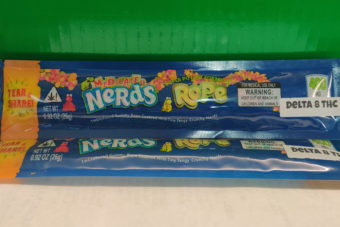
It’s now been 800 days since the American Kratom Association has requested a meeting with the FDA to discuss kratom misinformation.

The biggest piece of misinformation about kratom is that it can kill people. That is absolutely not true- as science shows us.
One scientist, Andrew Kruegel, has been studying kratom leaves for several years and has published several papers, including Synthetic and Receptor Signaling Explorations of the Mitragyna Alkaloids: Mitragynine as an Atypical Molecular Framework for
As Kruegel points out in The Science Behind Kratom’s Strange Leaves:
“Heroin and morphine kill by causing respiratory depression, in which the muscles that control the diaphragm fail and breathing ceases. These overdoses can be reversed if the drug naloxone is administered within a few minutes, before irreversible brain damage sets in. Sold as Narcan, naloxone acts as an opioid receptor antagonist by essentially kicking the other opioid compounds off the opioid receptors.
According to Andrew Kruegel, a medicinal chemist and opioid researcher at Columbia University, one hypothesis in the opioid field is that fatal respiratory depression, or failure, occurs as a consequence of compounds working through the mu receptors to activate the protein beta-arrestin. When this happens at a certain threshold, a cascade of signaling that interferes with the action of the diaphragm is believed to occur.
Both mitragynine and 7-hydroxymitragynine are partial agonists for the mu receptors, binding to and activating them at less than 100 percent of the levels that other opioids, such as morphine, do.
As Kruegel and colleagues observed in in vitro systems, beta-arrestin signaling is notably absent in this activity and thus may be responsible for kratom’s anecdotally reported ability to induce less respiratory depression than heroin or morphine.
The mitragynines are also both antagonists of the kappa and delta opioid receptors in in vitro systems, meaning they reverse the effects of pain-killing analgesics at these sites, but these actions aren’t yet understood in human or animal models.
These receptor interactions also are hypothesized to be responsible for kratom users experiencing reduced euphoric effects and slower development of tolerance compared to those experienced with widely abused opioids.”

EXPLORING THE HISTORY OF MITRAGYNINE PHARMACOLOGY
Mitragynine first was isolated from kratom leaves in 1921 by Ellen Field, a medicinal chemist at the University of Edinburgh.
Ph.D. student David Phillipson subsequently isolated 16 alkaloids from M. speciosa and four other Mitragyna species. “In his subsequent research, Phillipson investigated the alkaloids of Uncaria species, which are closely related to Mitragyna, as well as alkaloids of Cinchona species, the source of the antimalarial medicine quinine. All three genera belong to the same botanical family, Rubiaceae,” writes ,,John Arnst for ASBMB Today.
WHERE THE MISINFORMATION STEMS FROM
“While there haven’t been any recorded deaths from overdoses resulting solely from kratom in the United States, there have been at least three deaths caused by overdosing on mixtures of kratom and other controlled substances. In addition to one death in Norway and another in Thailand, there have been nine deaths in Sweden caused by the drink “krypton,” which consists of kratom mixed with an active metabolite of the controlled painkiller tramadol,” Arnst continues.
It seems that adulterated products are the problem, and this makes it incredibly important for our community to continue working towards enacting the Kratom Consumer Protection Act in all 50 states.
And, as an article in the Holy City Sinner pointed out recently in an August story:
“Most of the products on our shelves have regulations they need to pass before being allowed on the distribution line. Our food has them, from meat to vegetables. Our drinks have them. Recently in the UK, there has been a law passed that anyone under the age of 16 cannot have energy drinks that contain caffeine. Even our pets’ food has regulations. They are there for a reason – our protection.
The KCPA is a force that’s trying to break down barriers and show that Kratom isn’t dangerous when grown, distributed, sold, and consumed correctly. Without the correct processes and forms of legislation, there would be a flooding of the market containing dangerous products that put the lives of the public at risk. Those that enjoy using Kratom either as a stimulant or for a medical reason want to know they are in the safe hands of the FDA and the KCPA. This is why the Kratom Consumer Protection Act is so important. If it gets banned there will be a rise in illegal Kratom that isn’t regulated, meaning it could contain anything. It’s better to save lives by offering someone a safe solution rather than banning it altogether and pretending like it’s nothing to do with you.”











